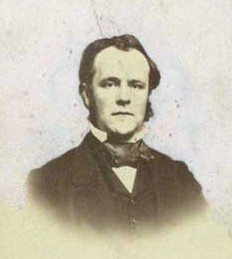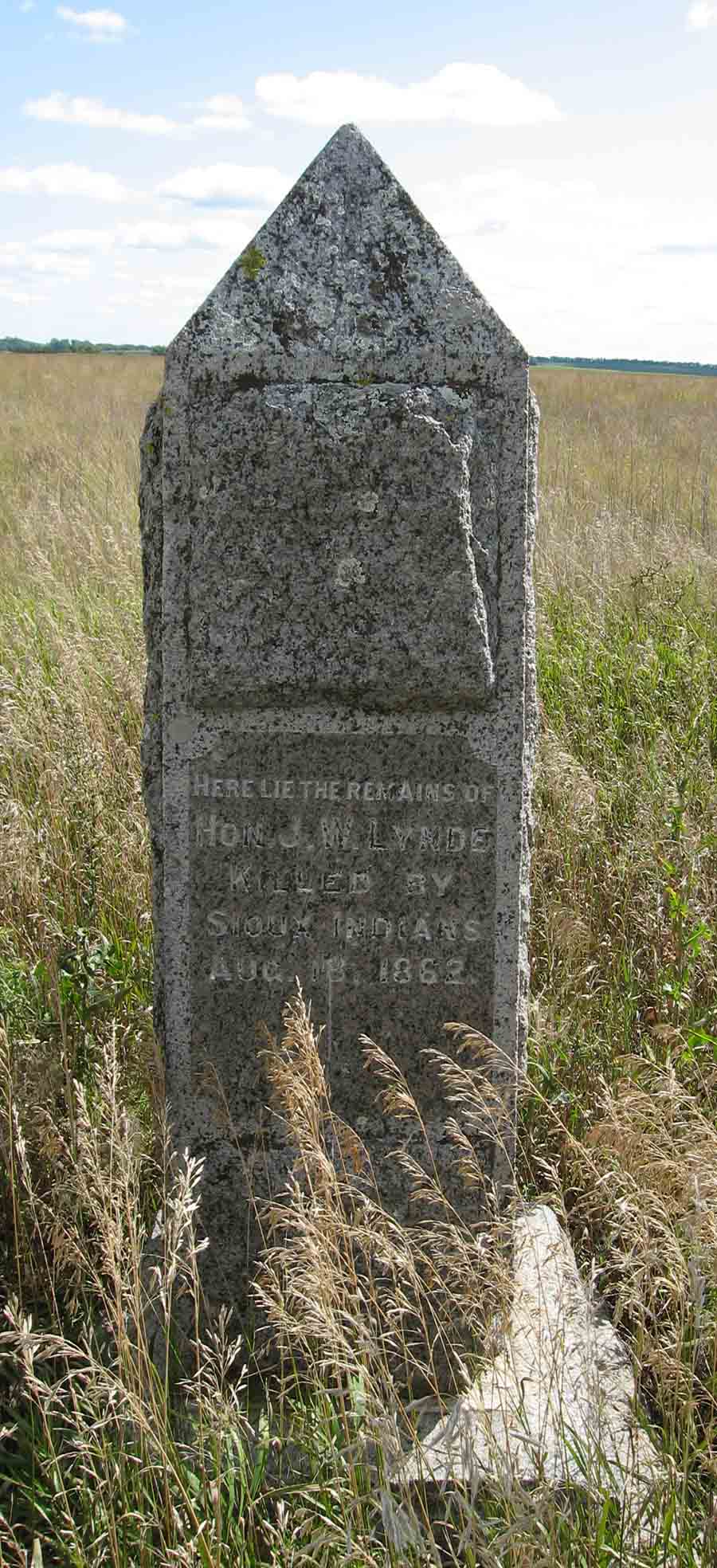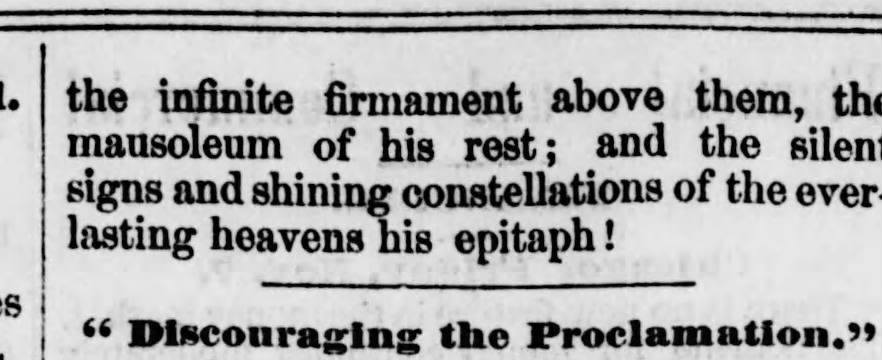According to a publication of the Minnesota Valley Historical Society entitled SKETCHES: HISTORICAL AND DESCRIPTIVE OF THE MONUMENTS AND TABLETS ERECTED BY THE MINNESOTA VALLEY HISTORICAL SOCIETY IN RENVILLE AND REDWOOD COUNTIES, MINNESOTA:
"Hon. James W. Lynd was a native of Baltimore, born in 1830, but was reared and educated at Cincinnati. He had received a college education at Woodward College, having attended from 1842 - 1844. He was a man of accomplishments and ability. He thoroughly mastered the Indian language, married successively two Indian wives, and spent years in the study of the history and general character of the Sioux or Dakota tribe. For some time prior to his death he had been engaged in revising for publication the manuscript of an elaborate work containing the results of his studies and researches. Under the circumstances the greater part of this manuscript was lost. He was a young man, of versatile talents had been an editor, lecturer, public speaker, and was a member of the Minnesota State Senate in 1861."
"He came to Minnesota in 1853 and engaged in the fur trade, also edited the Henderson Democrat, published at Henderson. In 1860 he identified himself with the Republican party." (Minnesota in Three Centuries, Volume 3, 1908, p. 94)
According to Rev. S.R. Riggs, writing about James in the Collections of the Minnesota Historical Society, Volume III, James followed the example of others in the trade and "took Mary Naypaschue, a very respectable and educated Indian girl," and had two daughters with her. While James had been urged to marry Mary, he had never done so. Rev. Riggs further relates that James "later abandoned Mary and...attached himself to another woman, by whom he also had a child...this boy betrayed his paternity and his mother was proud of it." (page 111.)
However, James Lynd, Jr, the child of James and the unknown Indian woman, is mentioned in "A Thrilling Narrative of Indian Captivity: Dispatches from the Dakota War of 1862,"
At the time he was killed James Lynd was serving temporarily as a clerk in a trading house at the Lower Agency. On the morning of the outbreak, attracted by the unusual presence of many Indians in war dress, he repaired to his store and was standing on a doorstep at the entrance, watching the movements of the scowling warriors, when one of them raised his gun and exclaimed: "Now, I will kill the dog who would not give me credit." Then he aimed and fired point blank at the young trader. The shot was instantly fatal, and Mr. Lynd fell forward and died within a few feet of the doorway. His body was not mutilated, and was subsequently interred where it lay by Nathan Myrick, of St. Paul, the owner of the store.
In 1863 the Indian who killed Mr. Lynd was captured in what is now North Dakota by the scouts under Maj. Joseph R. Brown. His Indian name was "Waukon Wasechon Heiyadin," meaning "One Who Travels Like A Scared White Man."
He was taken to Davenport, Iowa, where the other prisoners were and died in prison the following year. The engraving is from an old photograph taken by Whitney, of St. Paul, and furnished for this work by C.A. Zimmerman."
Lynd Township in Minnesota is named in honor of James William Lynd. In our family tree, James is my husband's maternal Great(2)Grand-Uncle.
This monument is located across the road from the Lower Sioux Agency Historic Site, on Redwood County Highway 2, just east of Porter Avenue.
Lat 44.526683, Lon -94.964346.
According to a publication of the Minnesota Valley Historical Society entitled SKETCHES: HISTORICAL AND DESCRIPTIVE OF THE MONUMENTS AND TABLETS ERECTED BY THE MINNESOTA VALLEY HISTORICAL SOCIETY IN RENVILLE AND REDWOOD COUNTIES, MINNESOTA:
"Hon. James W. Lynd was a native of Baltimore, born in 1830, but was reared and educated at Cincinnati. He had received a college education at Woodward College, having attended from 1842 - 1844. He was a man of accomplishments and ability. He thoroughly mastered the Indian language, married successively two Indian wives, and spent years in the study of the history and general character of the Sioux or Dakota tribe. For some time prior to his death he had been engaged in revising for publication the manuscript of an elaborate work containing the results of his studies and researches. Under the circumstances the greater part of this manuscript was lost. He was a young man, of versatile talents had been an editor, lecturer, public speaker, and was a member of the Minnesota State Senate in 1861."
"He came to Minnesota in 1853 and engaged in the fur trade, also edited the Henderson Democrat, published at Henderson. In 1860 he identified himself with the Republican party." (Minnesota in Three Centuries, Volume 3, 1908, p. 94)
According to Rev. S.R. Riggs, writing about James in the Collections of the Minnesota Historical Society, Volume III, James followed the example of others in the trade and "took Mary Naypaschue, a very respectable and educated Indian girl," and had two daughters with her. While James had been urged to marry Mary, he had never done so. Rev. Riggs further relates that James "later abandoned Mary and...attached himself to another woman, by whom he also had a child...this boy betrayed his paternity and his mother was proud of it." (page 111.)
However, James Lynd, Jr, the child of James and the unknown Indian woman, is mentioned in "A Thrilling Narrative of Indian Captivity: Dispatches from the Dakota War of 1862,"
At the time he was killed James Lynd was serving temporarily as a clerk in a trading house at the Lower Agency. On the morning of the outbreak, attracted by the unusual presence of many Indians in war dress, he repaired to his store and was standing on a doorstep at the entrance, watching the movements of the scowling warriors, when one of them raised his gun and exclaimed: "Now, I will kill the dog who would not give me credit." Then he aimed and fired point blank at the young trader. The shot was instantly fatal, and Mr. Lynd fell forward and died within a few feet of the doorway. His body was not mutilated, and was subsequently interred where it lay by Nathan Myrick, of St. Paul, the owner of the store.
In 1863 the Indian who killed Mr. Lynd was captured in what is now North Dakota by the scouts under Maj. Joseph R. Brown. His Indian name was "Waukon Wasechon Heiyadin," meaning "One Who Travels Like A Scared White Man."
He was taken to Davenport, Iowa, where the other prisoners were and died in prison the following year. The engraving is from an old photograph taken by Whitney, of St. Paul, and furnished for this work by C.A. Zimmerman."
Lynd Township in Minnesota is named in honor of James William Lynd. In our family tree, James is my husband's maternal Great(2)Grand-Uncle.
This monument is located across the road from the Lower Sioux Agency Historic Site, on Redwood County Highway 2, just east of Porter Avenue.
Lat 44.526683, Lon -94.964346.
Inscription
Here Lie the Remains of
Hon. J.W. Lynde,
Killed by Sioux Indians,
Aug 18, 1862.
Gravesite Details
This book has been reproduced in part by the Red Rock Central 10th Grade History Class of 2000. From "Old Woodward" A Memorial"
Family Members
Advertisement
Explore more
Sponsored by Ancestry
Advertisement













